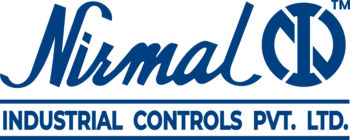
-
July 30, 2022
- 0 Comment
Difference Between Pressure Safety Valve & Relief Valve
Pressure Relieving Devices (PRD) are components used in refineries, chemical plants, and other similar facilities to prevent pressure vessels and other equipment from over pressurization by relieving excess pressure when necessary. They can be used to release gas, steam, liquids, or vapours. Properly functioning pressure relief devices are essential for protecting plant personnel and equipment, since unexpected overpressure events can potentially cause equipment damage, loss of containment, and result in costly plant shutdowns.
Pressure relieving devices include mechanisms such as Pressure Safety Valves (PSV) and Pressure Relief Valves (PRV), although there are other types of pressure relieving devices as well, such as Rupture Disk Devices and Pin-Actuated Devices. These devices can come in many different sizes and shapes and allow pressurized fluids or gasses to escape through a secondary passage out of the system so that pressure cannot build up beyond safe operating limits.
Pressure Safety Valve
A Pressure Safety Valve (PSV) is a type of valve used to quickly release gasses from equipment in order to avoid over pressurization and potential process safety incidents. PSVs are activated automatically when pressure exceeds prescribed pressure limits in order to return equipment pressure to a safe operating level.
Pressure Relief Valve
A Pressure Relief Valve (PRV) is a type of valve used to release stored gas in various equipment in order to maintain an optimal pressure level. PRVs open gradually as pressure builds up in order to release the necessary amount of pressure. While the term PRV is sometimes used interchangeably with PSV, there is a difference between the two. A PRV opens gradually in relation to the pressure, while a PSV is opened suddenly once the pressure hits a certain level in order to avoid over pressurization and a potential process safety incident.
The function of both PSV and PRV is that they relieve the excess pressure from the system by opening automatically and they get closed automatically when the pressure in the system normalizes.
The most common type of safety valves used in industries is spring loaded safety valve.
The valve has a spring which is attached to adjusting screw. The screw can be adjusted to compress the spring thus imparting flexibility in adjusting the spring force. The spring is attached to a disc using a spindle. The location of the disk is where the fluid enters the valve when the system is over pressurized.
If the pressure force is less than the spring force then the fluid will not be able to move the disc. Such condition represents normal operating condition. If the pressure force is equal to the spring force then the disc starts to move. The fluid enters from the equipment to the valve and starts moving out of the system.
In case of PSV, when the pressure force becomes greater than the spring force the valve opens instantly and a ‘pop’ sound occurs whereas the PRV opens proportionally to the increasing pressure. It can be said that the opening is relatively gradual as compared to PSV.
The escaping fluid results in decrease of the pressure. When the pressure force becomes smaller than the spring force again then the disc returns to the same location again and seals the equipment.
